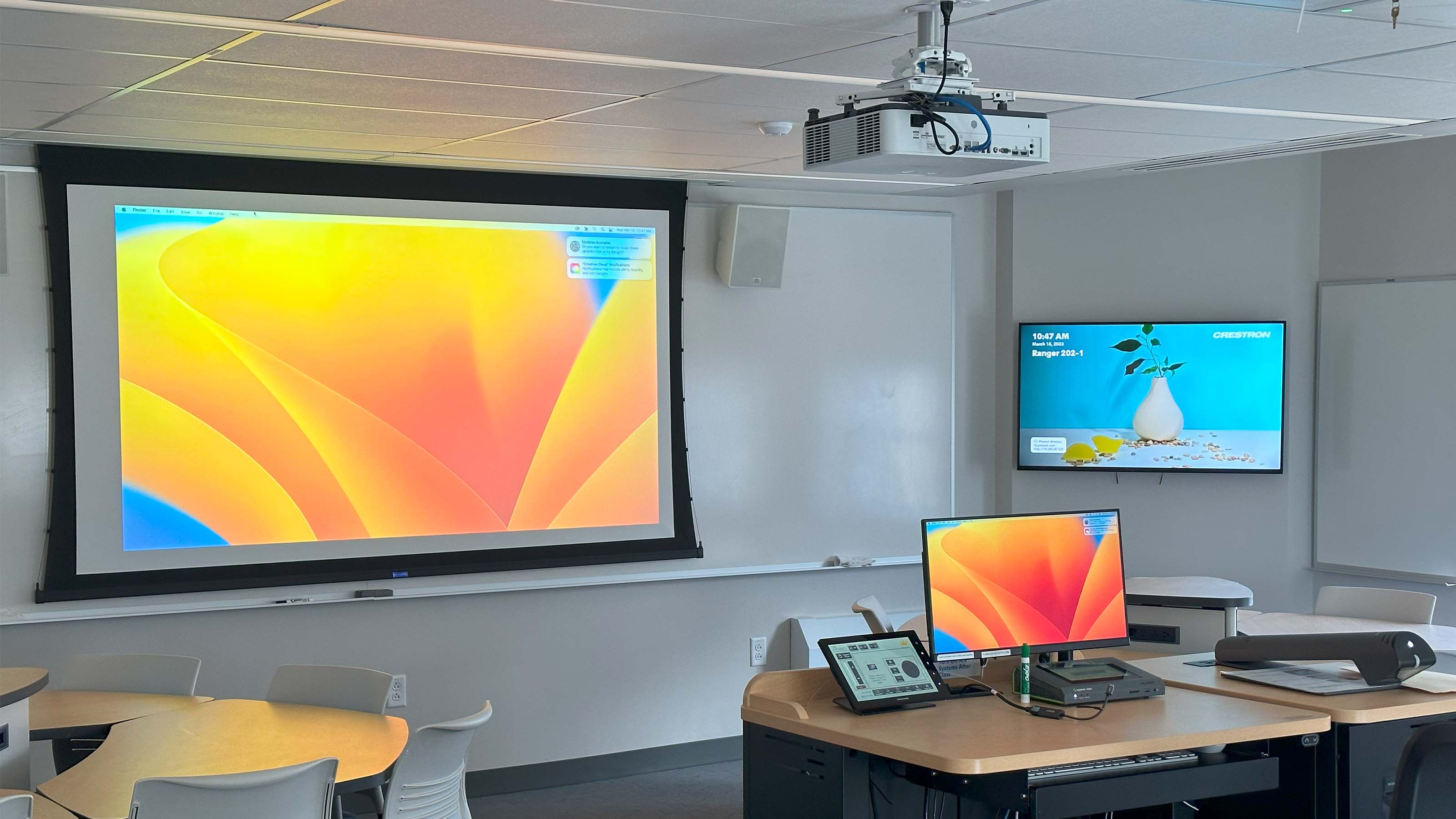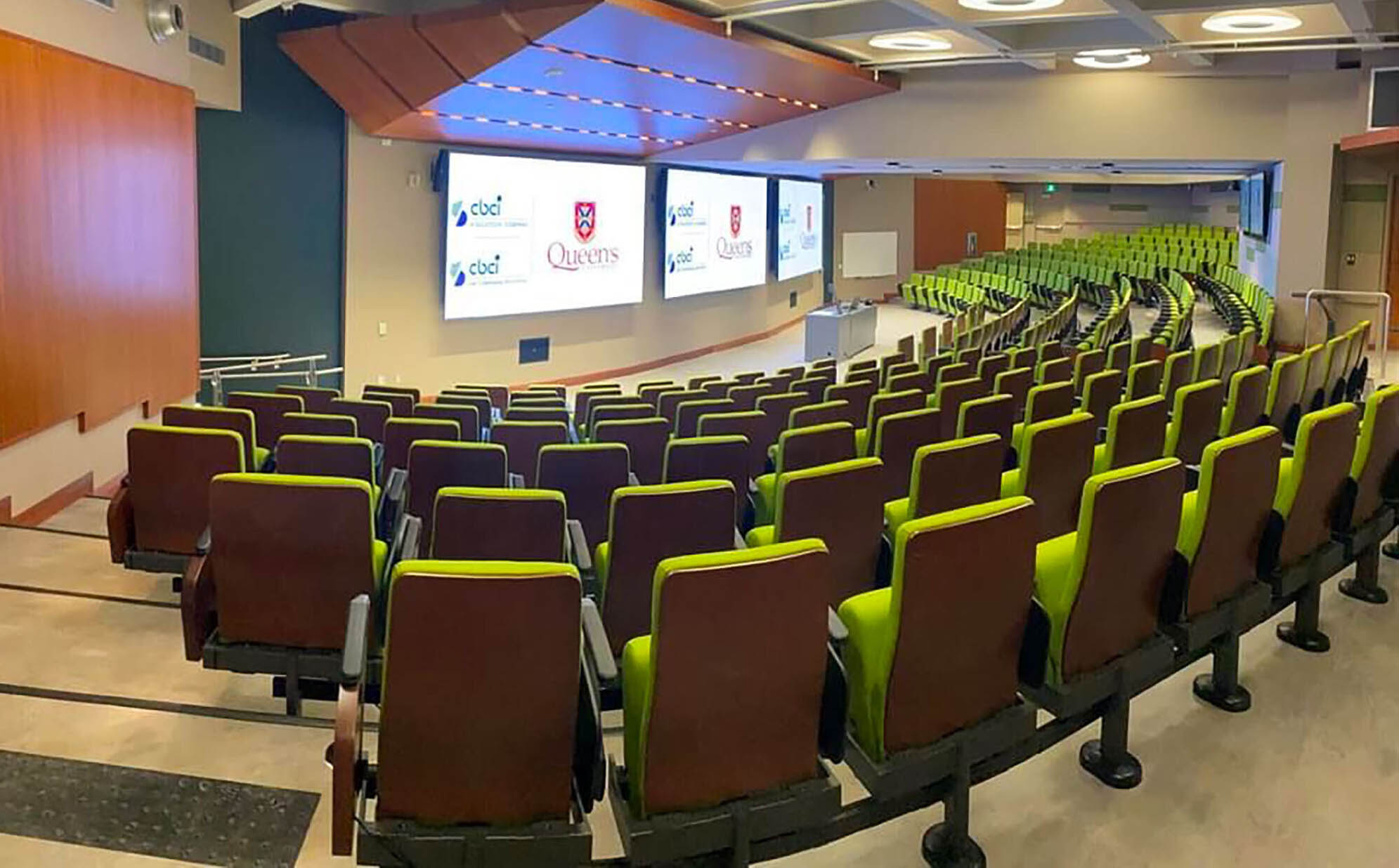
In 2020, the COVID-19 pandemic spurred a headlong rush into hybrid learning, as colleges and universities added AV-enabled distance learning facilities to their campuses to keep at-home students in class and on track. Three years later, with the pandemic in the rearview mirror, the widespread resumption of in-person, on-campus learning has raised a fundamental question for the educational and AV industries alike: Where do hybrid classrooms and other AV-enabled spaces fit these days?
[The Integration Guide to Distance Learning and Remote Workflows 2023]
The sudden, unexpected need to support hybrid learning on a mass scale understandably hit schools and colleges hard. For example, the University of Rhode Island (URI) in Kingston, RI, had a "twofold problem to make this happen, as we didn't have the technology in our classrooms and we didn't have a viable lecture capture/streaming solution that would work campus wide,” said Jeffrey Levesque, URI's lead information technologist.
A "triage" approach is how they solved the problem. "Our classrooms all received a hardware hybrid solution depending on how heavily used the classroom was,” Levesque explained. “All of our classrooms got an upgrade to a Spectrum Industries Freedom One eLift Lectern in the room from a black AV rack on the wall and a dedicated in-room computer.”
Things were somewhat better at Johns Hopkins University in Baltimore. According to Erin Maher-Moran, JHU’s IT manager—classroom technology, schools at JHU had already begun to adopt Zoom by the time COVID-19 started shutting doors. As a result, the JHU faculty was already familiar with this sort of technology and finished the semester remotely.
Still, JHU needed more hybrid facilities, so Maher-Moran’s team was "tasked with setting up any room that had a social distance capacity of six or more with the ability to teach in person and remote students,” she said. “Solutions varied depending on the size of the room. Some had cameras and mics installed. Some had a Zoom cart added. We also set up 30 ‘studio’ spaces with Zoom carts that instructors could use to record lectures in advance.”
'Butts In Seats'
Where does hybrid learning fit today? That's the big question for educators and the Pro AV industry alike—and on this point, opinions vary.
[The Future of Education Is Present]
Jason Young, national sales manager of professional display solutions for Sony Electronics, believes there is a future for hybrid AV learning. “From my perspective, hybrid learning will be a constant offering from universities going forward,” he said. “While it may not [need] to address COVID restrictions any longer, schools have found many benefits of offering synchronous and asynchronous classes. Hybrid offers the ability for students to attend classes from other locations, if schedules for in-person classes do not permit them to participate. It also allows universities to offer more sessions of classes, even if physical space is limited.”
Levesque endorses this belief, with URI's hybrid AV systems still in use. “We are actually in the process of designing our next generation of classrooms right now, and when we solicit feedback from instructors, they all want to know if the hybrid classroom is here to stay as they rely on it now,” he noted.
However, Marc Nutter, who is the business development representative for sales and systems integration at Solotech, doesn’t agree wholeheartedly with this assessment. “While some institutions continue to offer hybrid classes to accommodate diverse learning preferences and situations, others have transitioned back to traditional in-person classes,” he said. “The decision has depended on the institution's resources, student references, and the evolving COVID-19 situation.”
Even during the worst of the pandemic, when the motivation to provide distance learning was at its highest, some classes were "extremely difficult to hybridize,” said Kevin Schornhorst, AVI-SPL’s director of SLED (state local education) business development. “How do you [convert] a lab environment where you're doing biology experiments?”
“COVID brought about meaningful changes in teaching methods and accelerated the adoption of technology in education.”
Marc Nutter, Solotech
That said, Schornhorst believes educational institutions will continue to offer distance learning. However, the eager willingness to adopt hybrid learning technology that occurred during the pandemic has somewhat receded, especially since “the faculty that really never wanted to do this are back in seats,” he offered. After all, universities “spend millions upon millions of dollars in brick and mortar, and they want students—what I like to call butts in seats—to be in that campus environment overall.”
Same Technology, New Uses
That desire by many faculty and school/college administrators to get "butts in seats" is affecting their motivation to offer hybrid learning. At the same time, others within the educational sector actually became fans of this AV technology, having seen it in action, and they still want to use it today—and not just for teaching.
Case in point: URI’s college administration is fully on board with using hybrid learning AV technology for their meetings. “We have been updating meeting rooms/conference rooms with some of this same technology," Levesque said, "as administration wants the same sort of ease of use in their conference rooms.”

Maher-Moran agreed. “Administration definitely utilizes these technologies to do remote meetings regularly,” she said. "The department my team sits in has a monthly meeting where half of the participants are remote and half in person.”
Many JHU instructors are using the equipment for lecture recording, Maher-Moran added. So, the adoption of hybrid AV is not only staying in place but being expanded to offer services to a wider audience in some instances.
Changes to Teaching Methods
Those in the educational AV sales, installation, and support sector have to wonder: Did COVID-19 bring about an attitude shift in the teaching profession, with distance learning (and its AV technology) finally being accorded the same degree of respect as in-person teaching? Or will Pro AV run into the same prejudices against hybrid learning that hampered it until the pandemic-inspired sales boom?
On the positive side, Sony’s Young believes hybrid learning is here to stay and is a "critical part of the educational/instructional environment for higher education institutions. Educators were absolutely forced to change and adapt their methods to ensure they can meet each of their students where they need to be met. I am sure some were challenged, and in some cases still struggle today, but many have thrived and have been able to reach a subset of students they may never have had an opportunity to encounter.”
“Our campus has embraced hybrid learning and it is still being used,” said Levesque. URI is "still working toward making hybrid easier on campus and making it better for BYOD hybrid in classrooms, as that is the most common request in their spaces,” he added.
[SCN Hybrid World: Expert Insights and 16 Speakerphones to Know]
Solotech’s Nutter thinks it depends on the institution. "While some have fully embraced it as a permanent teaching method, others have scaled back on hybrid options,” he observed. “Nevertheless, COVID brought about meaningful changes in teaching methods and accelerated the adoption of technology in education.”
Maher-Moran is similarly cautious in her assessment. “At least for the time being, brick-and-mortar schools will remain mostly in person,” she said. “It will remain that way until the culture for students shifts. If students stop applying to standard in-person programs, that will drive the change more than anything.”
The bottom line: Hybrid learning proved its educational worth during the pandemic. This has given it more traction in colleges and universities in the pandemic’s aftermath—but in-person learning is still attractive for institutions that still have to bankroll their physical facilities.







